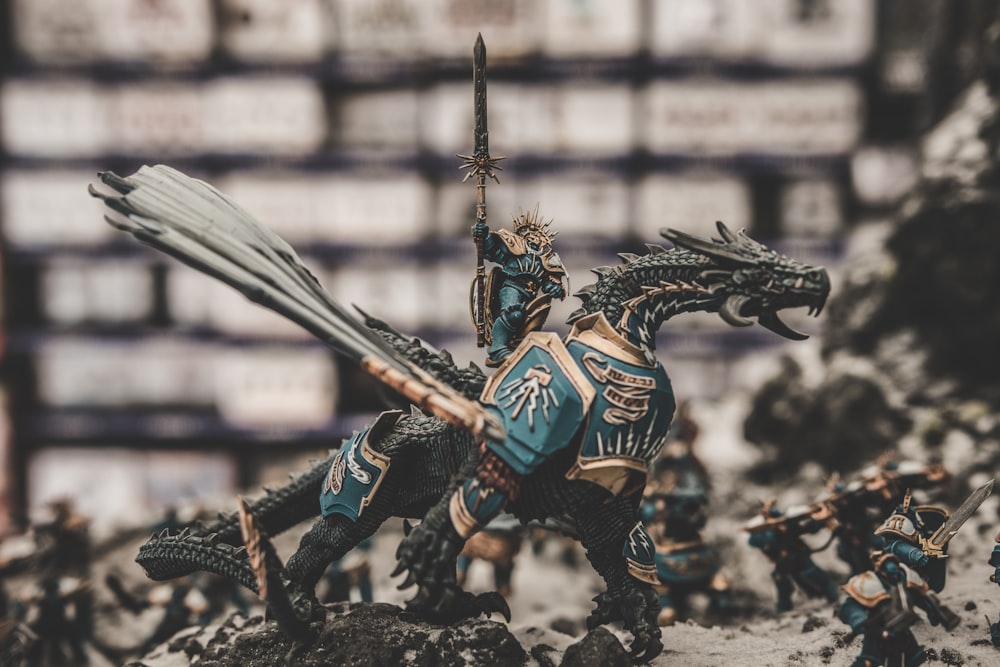Do you ever sit and think about why are you doing some things and consider who has done or said them first? It may sound as overthinking. This is not something we do all the time; unless one is fond of digging towards the root of things.
Some people study history in order to find an explanation for their present days, others study etymology in order to understand the whys behind the language they are speaking. There can be many weird, maybe even funny stories that can come out of this research. I went ahead and selected a few interesting and important ones, which have profound consequences to this day. Let’s see how those go.
The universe of storytelling comes in many shapes – realistic stories, fictive stories, myths, legends, fairytales, the story our grandpa told us from back in his time or a simple occurrence told by an old friend. Most of the times we are not aware of the effect that this has on us in the long-term.
Some brief examples: the tooth fairy, the monster under your bed, the acts of love we usually do, the “pandora’s box” phrase – there is an explanation behind all of them. Where do we use them and what is the connection with the “past”? Let the overthinking start.

Fear of the dark and other childhood stories
Remember that night of insomnia you might have experienced at some point. Amongst all the other twisted thoughts in your head, you were probably thinking about the terror the dark creates within you – that terror that gives you a strange feeling and it remembers you of your childhood. What was it that scared you so much back in time? Maybe the monster under your bed…
The fear of the monster under the bed is very common within children and we may sometimes find ourselves recalling this fear. However, where did it come from? Who started this? Some parent, at some point, threatened his child for the first time with the appearance of the monster from under their bed, when they did not want to sleep. Anyway, even this idea and affirmation comes from an older story and from some developed human instinct. From the beginning of time, every attack and every malefic occurrence was happening during nighttime. Then there is also the common and normal fear of what we cannot see. We cannot protect ourselves and neither beware of our “enemy” in the ark. This phobia is being fed by the numerous horror stories we read or watch. This psychological thig mixed with ancient and modern stories will make one turn on, one by one, every light of their house when they hear a noise. We have all done it at some at some point.
While for adults it is a bit hard to overcome this fear, as it turns into a more serious one, it is possible to, at least, help children fall asleep. Mythology gives us the “good guy” as well – the “Sandman”, who actually helps children fall asleep. It is a Scandinavian myth that says that he is throwing magical sand in their eyes, which is also meant to bring the good dreams. In the mind of a child, this could work as a psychological effect, just as the “placebo” effect works on us when we take a pill. The Sandman is also a good example of how old stories and myths could inspire art – we can find him as a main character in Neil Gaiman’s comic books, The Sandman and as a symbol in Metallica’s Enter Sandman song. Some stories live through other stories and most of them start as a childhood story. Here is another one:
Do you remember fairies? We used to love them as a child. I have one that was also present in our childhood days – in an apparent, physical way, in our naïve mind – the Tooth Fairy. As a child, losing a tooth was neither a simple procedure, nor an event without consequences. It hurt, but hey! – we were getting money for it. Maybe not us in Romania, but American kids surely were getting some gold for their teeth. The old myth says that if we left your lost tooth under your pillow during the night, the tooth fairy would come and pick it up. As a reward, she would leave us some money under the pillow. In our innocent childhood days, this was a moment of happiness. And this myth was told for the first time in the medieval era. It is impressive how we still use this technique with kids nowadays (like Santa Claus, just that not as popular).

Maybe you have a vague memory about throwing your tooth over the roof of your house. This would be another made up myth of how to be rewarded for your lost tooth, which is applied in other cultures. It doesn’t bring money but it is said to bring good luck to kids. Not that much worth the pain, right? I remember believing strongly in it though.
Children are fascinated with stories; their world revolves around them. That’s why it is so easy for parents to educate them with the helping-hand of a good story. In fact, we are led by stories, too, even though we don’t realize it. We can take a deeper look into the adulthood world.
When did the romanticism start?
Love stories
Taking one of the nicest things adults enjoy doing today – nice, romantic stuff with or for their partners. Some things might be done by instinct but others are inspired from stories heard before, although we may not realize where and how we heard them. It could be a recalled tale from your childhood, an old movie you watched before, a glimpse you took into your mother’s romantic novels or some simple gestures and adventures noticed outside there, in your surroundings.

Romeo and Juliet is one of the most commonly used comparison when referring to an in love couple. “Be my Juliet and I will be your Romeo”, “Romeo and Juliet are together in eternity”, “A lovestruck Romeo sang the streets of serenade” – some songs that made use of these characters and of the ever-lasting love story. It’s taken as an example of true love and sacrifice, as a whole, but also as an example of a prohibited love. Anyway, since the 16th century people long to find their Romeo/Juliet. This is an older example, but most of the idealistic love stories depict a feeling that can overcome any challenge, a feeling that is stronger that any barrier in life.
There are some more examples that could quickly come to mind: Tristan and Isolde, Beauty and the Beast and The Sleeping Beauty or some more modern stories like Rose and Jack´s one from Titanic. Oh! And let´s not forget Jane Austen´s books and her particular characters and dialogs she builds between them. We have proof that love examples and inspiration can date back in any cycle of our life. As a kid, we don’t recognize their importance; as a teenager, we desperately wish to live the same stories; and as an adult, we don’t really realize that we had looked for that feeling before.
Talking about Tristan and Isolde – the end of their tragic love story depicts a rose that grown on Tristan’s tomb – a rose that will live forever. When did we first hear about roses, by the way?
The rose
This flower of passion is a symbol for love and romanticism since the beginning of art and culture. We have the Greek mythology as a reference and Aphrodite’s legend – the flower would grew with her tears and the red color would be given by her lover’s blood. It’s marvelous how a simple legend can have such an influence over the world and their customs; and this is just a legend out of thousands, maybe million others. Maybe you have come upon Saint George’s one:

Dragons “lived” way longer than in George R.R. Martin’s books. The legend made Saint George the main character of a brave battle with a Dragon and a beautiful love story. He saves a princess whose destiny had made her the perfect sacrifice for the dragon who was threatening the city. From the dragon’s blood there grew our famous rose, which he offered to the princess.

Saint George is the patron Saint of various towns and countries but I would choose Catalonia (Spain) for some “did you know” facts here:
- during Saint George’s day, according to tradition, men have to offer roses to women.
- the legend is so powerful within Catalans that even their flag contains the image of the Saint, on a horse, killing the dragon with his sword
- the architecture of “Palau de la Música” in Barcelona is beautifully portraying, amongst other impressive statues, the statue of Saint George and, also, a ceiling where multiple roses surround the bright stained glass.
This is how a simple story can become a culture and how it can turn into art as well.
Hand-kissing
Here we are looking through another example of romanticism, which is, perhaps, a more rarely encountered one. It is a special gesture because it suggests respect and honesty. It would be interesting to talk a bit about its origins: we can go way back to the Roman empire when it was employed as a sign of submission and respect for monarchs (it could have settled the base of its evolution). It was later on, in the 17th century, in the Polish and Spanish courts as an expression of courtesy and esteem. In time, it turned into the romantic gesture we all know today, still having as main symbolism respect and sincere appreciation. We can consider it fully valuable.
Even words have a story
Now let’s get to something even more common and which we often encounter in our lives: the language, our daily speech. During our day-to-day conversations, we find ourselves saying some sentences or more like expressions that we had surely heard before, that are specific of the language or quoted from some old story.
Whenever we are joking around with our friends, we use all kinds of quotes and phrases we had heard in movies and books. So whenever I say that my room is my private space, “you shall not pass!” Most probably, the first thing that comes to your mind is Gandalf´s face and Lord of the Rings. However, this phrase was shouted for the first time during the First World War, within the battle of Verdun. It was emphasizing the determination of the French army to defend their territory from the Germans. The original expression is “they shall not pass”. Nowadays it is still used in similar situations and propagandas, given the power and courage that it evokes.
If we were to have a wider, cultural view, the sentence has been adapted in various languages, too, although one may utter it in English most of the times. In Romania, for example, “pe aici nu se trece” has been said during the “battle of Marasesti” (still against the Germans) and it gave the name to a Romanian movie inspired by the historic WWI happenings.
Browsing through the infinite quoting scenarios, from different cultures, there are some funny ones that come in view (well…in “hearing” actually). Latin America is a fully alive and full of humor land. That is why they also have a great deal of weird and amusing quotes and phrases. “Vete al carajo” could totally fit into this category. It is literally translated as “go to the carajo” but we have to see with this carajo means, as it is a typical Spanish word.On the old Spanish sailing ships there was this guard post on the highest point of the ship, which was very uncomfortable due to the windy conditions and the movements of the ship which were making it unstable. Given its bad position, it was also used as a punishment. Crewmembers who were disobeying the rules were being sent there. Therefore, each time latins get mad at someone they send them to “el carajo”. Thinking about it, it is actually one of the few phrases that actually make total sense. Consider it for the next time.
The English “fair play” term is an accurate example of how language adapts to the passing of time. The one who “gave birth” to this way of expressing justness was Shakespeare. He used it in “The Tempest”, where it was pointing out the negotiation of kingdoms. Currently, we are using it in sports or in any other day-to-day similar circumstances. Sometimes it’s interesting to think about its origins; it is not “fair play” to not give credit.
Some stories are traveling through time
We have seen that stories affect us unconsciously and they sometimes inspire us as well. There is more to it, anyway, when somebody taken action on them. Things flow along with time and people use, recycle and modernize learnings from before.
The modern art and technology is even using old discoveries in order to make them real or to create a piece of art.
The parallel universe, mentioned by Plato hundreds of years ago, is taking more and more shapes today with the scientific discoveries. It also creates some pretty terrifying horror movies (Example: Stranger Things series)
Oh, Bella Ciao!
Does this sound familiar to you? It’s that kind of song that gets stuck in your head instantly and unwillingly.
The Bella Ciao song, initially composed as a defensive against fascism and chanted by the Italian partisans is still intonated during protests for freedom and opposition. Besides, it also makes the main theme of the famous “Money Heist” show. In the series, the song conveys the shouting for strength and resistance. Its symbolic meaning can be applied in a variety of scenarios and it can be a tool for art creation. I bet you would feel like playing that song on the background even in some small, glorious moments of your life, too.
It doesn’t matter whether you are an adult or a child. Everybody deserves a story and, consciously or unconsciously, that old or modern fairy tale is leading your way through life. They say kids are smart in their tiny, imaginary world. This is why we should be kids from time to time and use this adulthood tales to develop something bigger out of them; or in order to just enjoy and escape from reality from time to time.
Codrina Pavalachi
